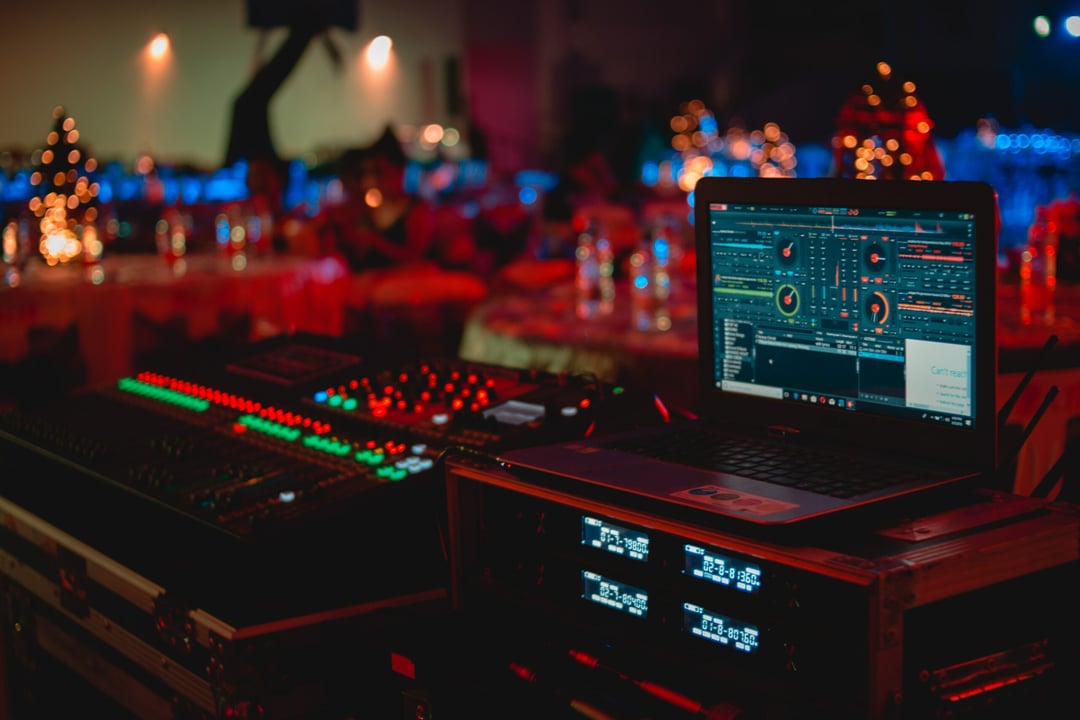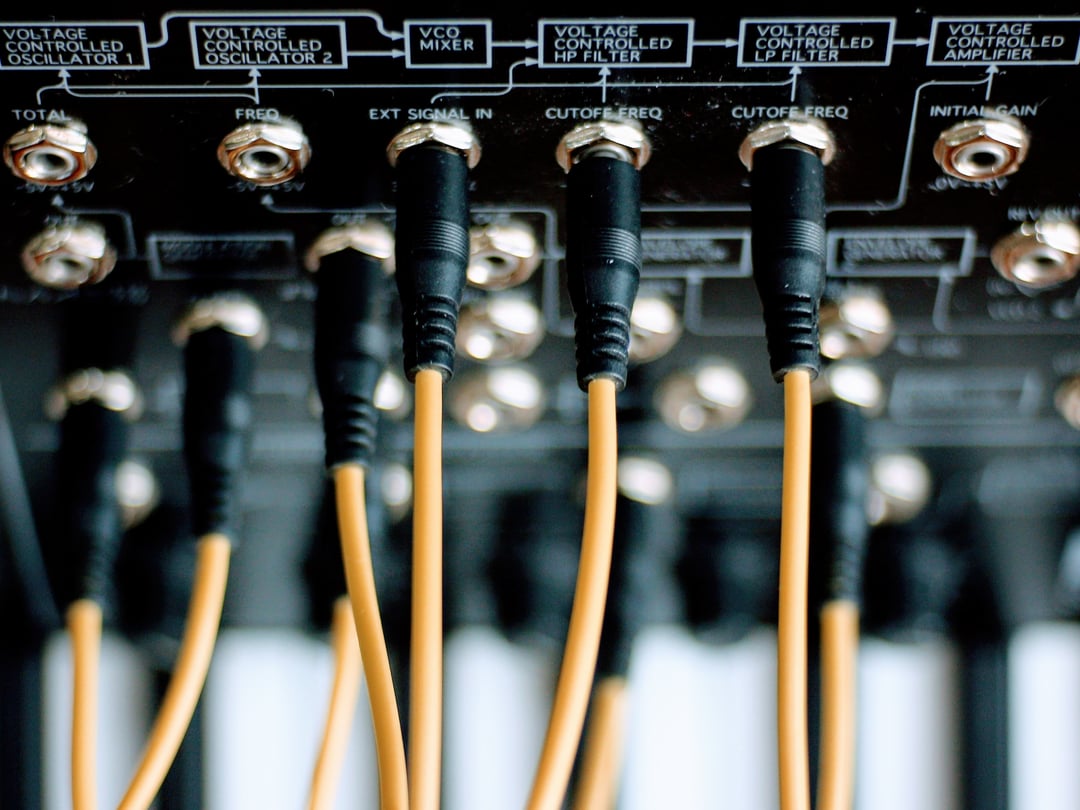The A1 is the primary audio engineer in live event production and is in charge of the sound system's technical design (PA, mics, wireless, etc.), as well as the event’s live sound mixing. Especially in a live event environment, the A1's function is crucial. Prior to the introduction of lighting and video, audio has always played the most important technological role.
What is the role of an A1 leading up to an event?
The A1 is usually working on a show a few weeks in advance, during which time they first go through the sales quotes and check that the sound system is up to par. At this stage, any modifications such as additional speakers, microphones, or crew members are added.
Then, the A1 collaborates with the Technical Director (TD) or Production Manager to ensure that adequate time is built into the production schedule for load-in, rigging, sound tests, and other tasks. During load-in, the A1 may need to request a "quiet period" where room noise is kept to a minimum while the A1 checks and "rings out" the system or room/space.
Importantly, the A1 collaborates closely with the A2, the second-in-command audio engineer. Backstage (or off-stage), the A2 is in charge of managing wireless frequencies and positioning microphones on presenters and performers. The A1 and A2 still have a dedicated and private comms channel where they can talk about who will be on stage next and what microphones they will be using during the performance.

What does an A1 do during the event?
Typically, an A1 mixes live shows from the “Front of House” position. For smaller shows, the A1 may mix from the side or backstage, especially if there is no monitor tech. The size and type of audio mixing console is often based on the size of the event and preference of the A1, along with their EQ and other processors.
During rehearsals, the A1 is tracking along in their show flow (rundown), as the Show Caller advances from item to item. The A1 will be actively taking notes of which mic placement, how the presenter is speaking, adjusting gain, EQ, and more and ultimately saving the choices as a scene or preset on the console. This allows for quick adjustments during the show.
Another responsibility for the A1 is to track playback during the show, often called IRs (Instant Replays), which is annotated as such in the show flow. These can be triggered by an Instant Replay system or by a playlist on a computer. During the show, the A1 is primarily mixing between live microphones, video playback systems (DDRs or Playback Pro), and IR systems.
For strike (load out), the A1 often sticks around and manages the audio department’s load out. Sometimes, the A1 will depart early and leave the A2 to manage the strike.
Once struck, the A1 will check the equipment back into its storage racks & carts and debrief with the Chief Audio Engineer (CAE), Producer, or Production Manager on how the show went and any additional feedback.
The A1 sets up the next event to be ready to go in hopes of having “no surprises” when it comes time for load-in.
Another type of situation that the A1 may be asked to assist with is when a transmitter fails during the show or the sound and video signal does not come through on a microphone. The A1 will usually be asked to do the same repair as the TD unless it is considered more urgent to have the TD do it first. The A1 will then send the TD the GPS location of the transmitter and explain what may be going on.
As the production is running its course, the A1 also takes care of wireless connections. Wireless wiring is usually done after the show ends and at the end of the night.
Check out: Live Event Crew Starter Guide
What does an A1 do after the event?
After the show, the A1 usually meets with the Tech Director and the production manager to discuss his observations about the performance. The A1 works closely with the TD/PM to review the ADR and make suggestions for future use. The A1 helps the TD/PM and Production Manager with any of the production problems that need to be addressed.
The A1 may also be asked to help with the clean-up and to check out audio & video connections for any signs of damage, such as extra wiring or damaged devices. Depending on the show, the A1 may also help load-out microphones that were used, microphones that were used but not connected in or out to the sound system, or audio setups for shows that are not running.

What are some tasks an A1 works on between events?
A1s are generally responsible for gear maintenance and repair. The A1 will diagnose a broken piece of audio equipment, often stripping it down and troubleshooting it with parts at hand. They may also work on redesigning existing systems and implementing changes to their audio setup (based on client feedback or production needs).
Additionally, the A1 may be responsible for troubleshooting video issues and working closely with the video team to make sure all of the content being projected to an audience meets the needs of the client. The coordination between audio and video is typically called “video assist”.
You might like: 10 Things Jeopardizing Your Career in Live Events
What do I need to become an Audio Engineer?
A good audio engineer will have the following
- Basic knowledge of audio terminology & applications – how to set levels, when to use gates and compression, what frequencies are boosted or cut & understanding why you would make that adjustment.
- Solid knowledge of signal flow & gain structure – not only in your audio devices (mixer, console etc), but how signals are routed through your venue from point A to point B.
- Understanding how to operate and troubleshoot audio equipment - how to check for power, how to open a mixer, etc.
- Basic knowledge of the operating system in which the software being used is running on (Mac, Windows) and high-level troubleshooting skills
The A1 does not necessarily have training in all of these skills. However, being able to learn audio principles (such as signal flow), and analyzing and troubleshooting issues is considered an essential skill set.
A good audio engineer has two signature character traits: openness to learning and a sense of exploration. Audio careers can shift rapidly in response to the emergence of emerging technology, new types of media, and consumer demand fluctuations.
🎧 Check out: How To Advance Your Events Career Through Education & Training feat. Omar Colom
How do I find audio engineer (A1) jobs?
1. Connect with others in the event/entertainment industry
Online and offline networks are great resources for A1s looking for work in the live events industry. Joining Facebook and LinkedIn groups, meeting colleagues on job sites, and joining training are all great ways to make connections and advance your career in the industry.
2. Look for audio jobs that match your skillset
Focus your job search on the type of work you want to do (see the list above), as well as the areas where such positions are most likely to be found, to save time and energy. Investigate and learn as much as you can about the businesses where you'd like to work.
You'll have a better chance of landing a job if you focus your job quest on the locations and types of work that interest you.
3. Establish a reputable web presence
In the eyes of employers and prospective customers, having an online presence makes you appear legitimate and attractive. It also allows you to expand your network beyond the people you meet in person.
Setting up a website and a social media profile would make it simple for potential employers to learn more about you and your achievements.
4. Learn the equipment
In an industry like events & entertainment, it is essential to get as much hands-on experience and training as possible. Start with reading the manual - most equipment manuals are available online, for free. Then, next time you’re on a job site or in a warehouse with the equipment, ask for permission to experiment with it or call up a company you’ve worked with before to ask if you can come in on a slow day to teach yourself the new equipment.
Are you a skilled A1 looking for more gigs? Click below and schedule your vetting call! 👇
